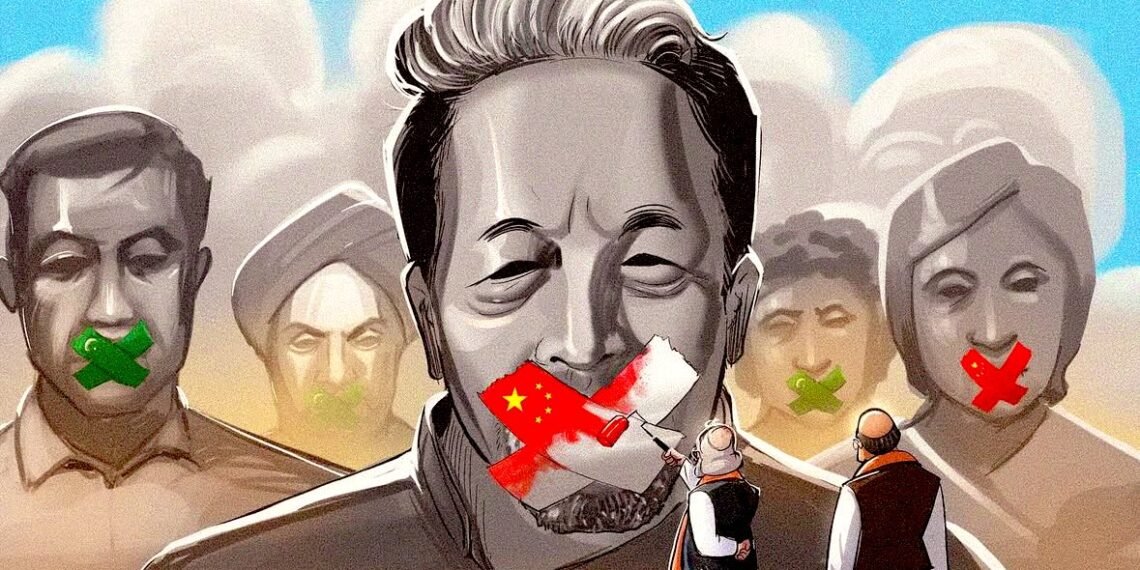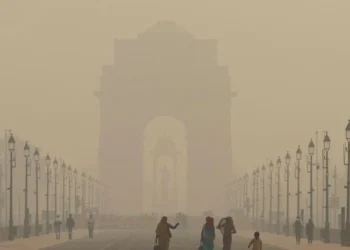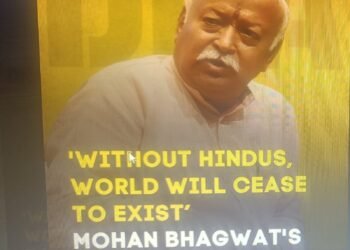Hundreds of “Himalayan warriors” amplify calls for statehood, leveraging social media to expose CRPF firing, curfews, and internet blackouts.
BY Navin Upadhyay
October 5, 2025
In the rarefied air of Ladakh’s high-altitude plateaus, where snow-dusted peaks conceal a deepening political crisis, a new kind of warfare has emerged—not with rifles or barricades, but with hashtags and viral threads. Since the violent clashes of September 24, 2025, which left four Ladakhis dead and dozens injured in police firing, social media has become the unlikeliest yet most potent weapon for activists demanding statehood and Sixth Schedule protections for the Union Territory.
This online campaign has mobilized hundreds of “Himalayan warriors” from Ladakh to Himachal, Uttarakhand, Arunachal Pradesh, and beyond, reaching even India’s remotest corners.
Their goal is clear: Wangchuk’s release, accountability for the deadly Leh firing, and a condemnation of the NSA detention and “anti-national” slurs—highlighting the Centre’s perceived mismanagement in a strategically vital borderland.
From Streets to Screens
The unrest began peacefully: thousands gathered in Leh’s parks on September 24 to support Wangchuk’s 14-day hunger strike for constitutional safeguards promised but undelivered since Ladakh’s 2019 bifurcation from Jammu and Kashmir.
What began as a Gandhian plea escalated when two hunger strikers collapsed, prompting surges toward government offices. Security forces—including CRPF—responded with tear gas, baton charges, and live rounds, killing four civilians (including a former army veteran) and injuring over 80, while 30+ personnel were also hurt. Vehicles burned, the LAHDC building was torched, curfews imposed, and internet blackouts enforced.
READ: Defiant Wangchuk Demands Judicial Probe in Ladakh Firing
Across X (formerly Twitter), Tsering Gaphel’s (@Tsering_Gaphel) September 26 post captured Ladakhis’ frustration: “They used Sonam Wangchuk to cover the case of four innocent lives taken by CRPF…No comment on why they shot those innocent, who ordered it & why … & now arrest Sonam Wangchuk & slow down internet … #Justice #Ladakh.”
@SajjadKargil, giving voice to Kargil’s Muslim minority, posted on October 1:
“We gave our blood to protect the nation’s borders and sovereignty. Do not paint us as anti-nationals—listen to our rightful demands for Statehood and Sixth Schedule.”
Angmo’s September 30 letter to President Murmu, PM Modi, and Home Minister Shah framed Wangchuk’s detention as a “strategic error” against a man who contributed to border infrastructure. With over 6,600 followers, her posts have propelled #FreeSonamWangchuk and #JusticeForLadakh beyond 10,000 mentions in 48 hours.
Mobilizing a Digital Army
Over 200 “social media warriors” from Himalayan regions are now posting maps of Ladakh’s vulnerabilities, op-eds on unfulfilled 2019 promises, and live updates from relief camps. Activists from Uttarakhand, Sikkim, and Himachal amplify ecological and tribal rights angles, while hashtags like #SaveLadakh pulse nationwide. Videos of protests, like Dhruv Rathee’s Gandhi Jayanti coverage, have drawn tens of thousands of interactions, and AAP-led vigils at Jantar Mantar trended nationally.
Retired army officers, including Gen GD Bakshi and Major General Yashpal Singh Mor, cite Wangchuk’s contributions to border outposts and decry the “anti-national” label. Bureaucrats and rights activists—including ex-LAHDC chief Rigzin Spalzang, Prashant Bhushan, and Yogendra Yadav—frame the detention as a crackdown on dissent.
The man who saw the war, fought the war .@GeneralBakshi 🙇🏼
Theses words come form ground realities who been there & saw everything..
Not one who are keyboard activists & WhatsApp graduate universities..#SaveLadakh #Ladakh pic.twitter.com/yOxq6Bh2Qd— Tsering Gaphel ༅༎ཚིི་ཪིང་དགའ་འཕེལ།། (@Tsering_gaphel) October 5, 2025
Even Wangchuk, from Jodhpur Central Jail, urged Gandhian non-violence on October 4, vowing to stay imprisoned until a judicial probe into the firings is conducted.
We gave our blood to protect the nation’s borders and sovereignty. Do not paint us as anti-nationals—listen to our rightful demands for Statehood and Sixth Schedule.#FreeSonamWangchuk #ReleaseAllLadakhiActivists #SaveLadakh pic.twitter.com/Y6tVfMc3Go
— 𝐒𝐚𝐣𝐣𝐚𝐝 𝐊𝐚𝐫𝐠𝐢𝐥𝐢 | سجاد کرگلی (@SajjadKargili_) October 1, 2025
READ: Election Commission Unveils 17 Reforms for Bihar Polls
The Centre’s Countermeasures Backfire
Authorities have revoked SECMOL’s FCRA license citing “foreign funding violations,” probed alleged Pakistan links, and dismissed viral deepfakes. Yet internet curbs and NSA detentions have only amplified offline frustration into online fury. Gen Z Ladakhis, facing over 30% unemployment, are redefining protest through digital channels.
With the Supreme Court set to hear Angmo’s habeas corpus petition on October 6, and dialogue stalled, Delhi faces a delicate political, economic, and strategic challenge. Ladakh’s Buddhist-Muslim harmony, a BJP bulwark, is fraying; tourism suffers; and border troop morale risks erosion.
A Mirror to India’s Fault Lines
This surge of digital activism isn’t mere noise—it reflects India’s broader federal challenges. Ladakh’s promises of autonomy, diluted into direct rule, echo unresolved crises in Manipur, Nagaland, and elsewhere. As hashtags and posts reverberate across the nation, Ladakh’s struggle highlights the limits of traditional levers of control in an increasingly connected India.













